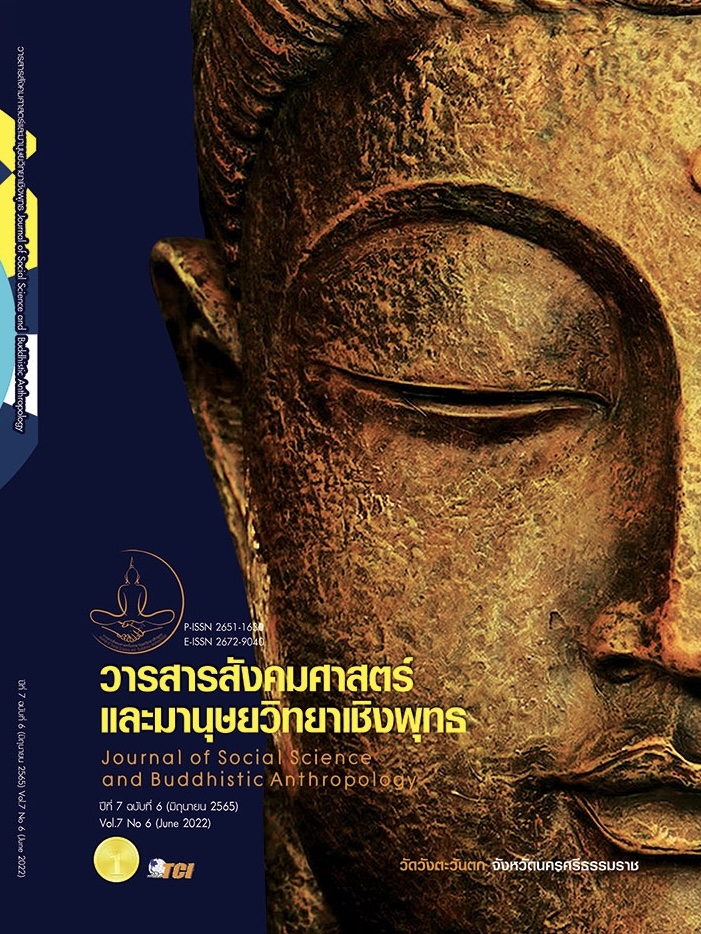THE DEVELOPMENT OF CURRICULUM BASED ON STRATEGIC THINKING CONCEPT TO ENHANCE FINANCIAL LITERACY FOR UNDERGRADUATE STUDENTS
Keywords:
the development of curriculum, strategic thinking, financial literacyAbstract
The objectives of this research article were to develop a curriculum based on the concept of strategic thinking in order to promote financial literacy among undergraduate students. The development of a curriculum consisted of four stages: 1) synthesis of theoretical concepts related to curriculum development as well as interviews with six financial experts; 2) curriculum drafting; 3) assessing the consistency of curriculum components by five experts in instructional curriculum and assessment; and 4) curriculum trial with 18 students in the Faculty of Management Science, Dhonburi Rajabhat University, in order to examine the level of difficulty, discrimination, and reliability of the financial literacy scale and the student’s satisfaction with the curriculum. According to the research results, the developed curriculum comprised seven components: 1) the principles of the curriculum; 2) the objectives of the curriculum; 3) the structure of the curriculum; 4) eight units of learning, namely personal financial management, debt management, financial goal setting, financial planning for retirement, financial markets and instruments, stock investment and how to use stock investment applications, investing in mutual funds and other financial instruments, and investment processes, that are in line with the concept of strategic thinking, which is composed of four steps. 5) the guidelines for organizing learning activities; 6) the learning materials; and 7) the measurement and evaluation. The assessment of the suitability and consistency of the curriculum components revealed that all items were suitable and consistent, with an IOC value of 1.00 for 36 items and 0.80 for 1 item. The difficulty, discrimination, and reliability of the financial literacy scale and the student’s satisfaction with the curriculum were at an acceptable level.
References
กานต์รวี บุญญานุสิทธิ์. (2559). ประสบการณ์การพัฒนาหลักสูตร. กรุงเทพมหานคร: สำนักพิมพ์มหาวิทยาลัยรามคำแหง.
กิตติศักดิ์ ลักษณา. (2554). การพัฒนาหลักสูตรสันติศึกษาตามแนวคิดการเรียนรู้โดยเน้นทีมสำหรับนักเรียนระดับมัธยมศึกษาตอนปลาย. ใน ดุษฎีนิพนธ์การศึกษาดุษฎีบัณฑิต สาขาวิชาการวิจัยและพัฒนาหลักสูตร. มหาวิทยาลัยศรีนครินทรวิโรฒ.
จารีย์ ปิ่นทอง และคณะ. (2561). รายงานการศึกษาด้านโครงสร้างเศรษฐกิจไทยที่มีนัยต่อการดำเนินนโยบายสังคมสูงวัยกับความท้าทายของตลาดแรงงานไทย.
เรียกใช้เมื่อ 3 มกราคม 2565 จาก www.bot.or.th/Thai/MonetaryPolicy/Economic Conditions/AAA/AgePeriodCohort.pdf.
ธนาคารแห่งประเทศไทย. (2559). รายงานผลการสำรวจทักษะทางการเงินของไทยปี 2559. เรียกใช้เมื่อ 3 มกราคม 2565 จาก https://www.bot.or.th/Thai/AboutBOT /Activities/Documents/ Article_23Aug2018_1.pdf.
ธนาคารแห่งประเทศไทย. (2562). รายงานนโยบายการเงินเดือนมีนาคม 2562. เรียกใช้เมื่อ 3 มกราคม 2565 จาก https://www.bot.or.th/Thai/MonetaryPolicy /MonetPolicyComittee/ MPR/DocLib/MPR_March2562_4687poi.pdf.
บริษัทข้อมูลเครดิตแห่งชาติ. (2561). ข้อผิดพลาดทางการเงินในแต่ละช่วงวัย รู้ก่อนแก้ไขทัน. เรียกใช้เมื่อ 3 มกราคม 2565 จาก https://www.ncb.co.th/fin-knowledge/ money-management-style-geny.
วรเวศม์ สุวรรณระดา. (2552). ปัญหาเบี้ยยังชีพสำหรับผู้สูงอายุ. กรุงเทพมหานคร: สำนักพิมพ์แห่งจุฬาลงกรณ์มหาวิทยาลัย.
วรเวศม์ สุวรรณระดา. (2557). ปฏิรูปบำนาญภาครัฐ : ก้าวสู่สังคมสูงวัยด้วยบำนาญอันมั่นคงและระบบการคลังที่ยั่งยืน. กรุงเทพมหานคร: คณะเศรษฐศาสตร์ จุฬาลงกรณ์มหาวิทยาลัย.
ศิริชัย กาญจนวาสี. (2556). ทฤษฎีการทดสอบแบบดั้งเดิม. (พิมพ์ครั้งที่ 7). กรุงเทพมหานคร: สำนักพิมพ์จุฬาลงกรณ์มหาวิทยาลัย.
สถาบันคีนันแห่งเอเซีย. (2558). รายงานวิจัย คนไทยก้าวไกล ใส่ใจการเงิน2558. เรียกใช้เมื่อ 3 มกราคม 2565 จาก https://thaipublica.org/wp-content/uploads/ 2015/03/1.Citi-LIFT-FL-Research-Report-THAI_Draft.pdf.
สืบวงศ์ กาฬวงศ์. (2559). การบริหารทรัพยากรมนุษย์ในทศวรรษหน้า = HR in the next decade. กรุงเทพมหานคร: สำนักพิมพ์แห่งจุฬาลงกรณ์มหาวิทยาลัย.
Downloads
Published
How to Cite
Issue
Section
License
Copyright (c) 2022 Journal of Social Science and Buddhistic Anthropology

This work is licensed under a Creative Commons Attribution-NonCommercial-NoDerivatives 4.0 International License.








